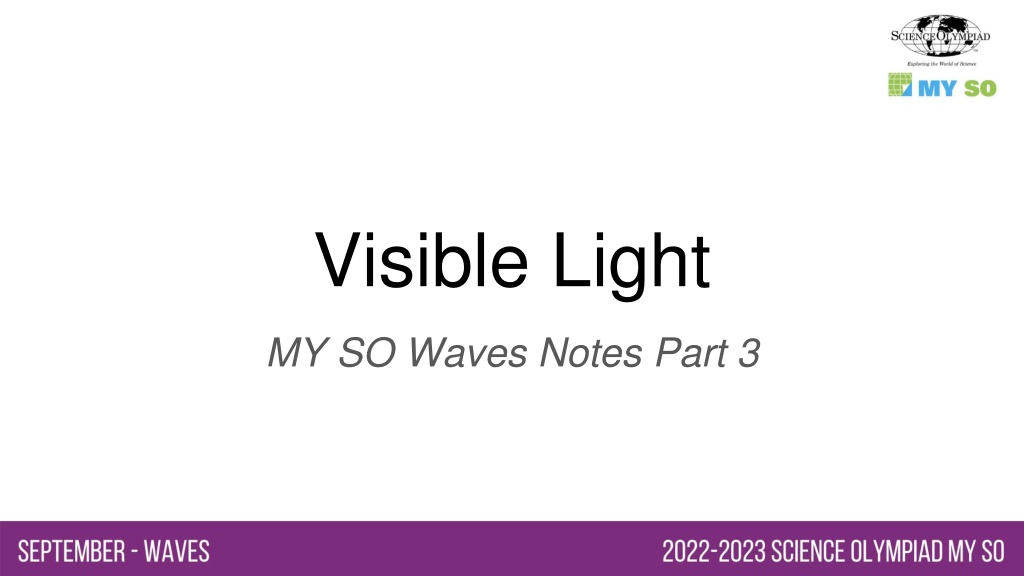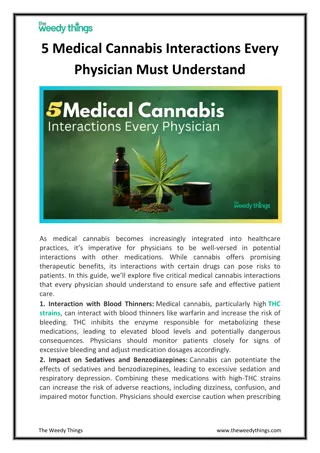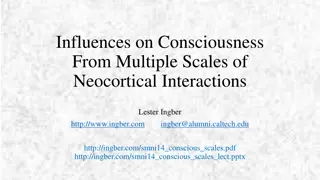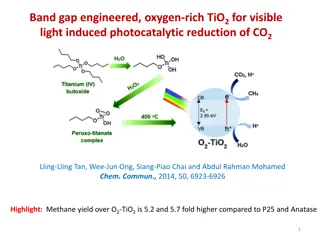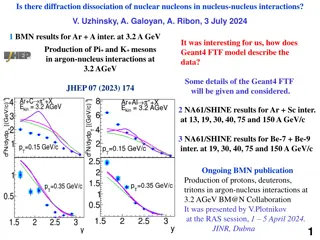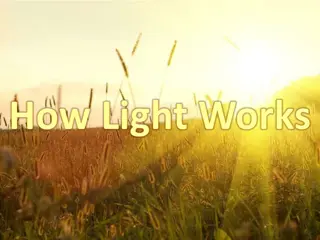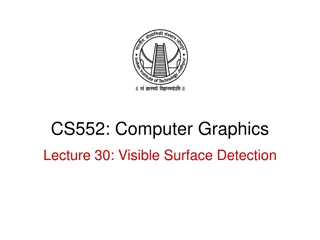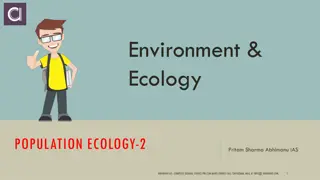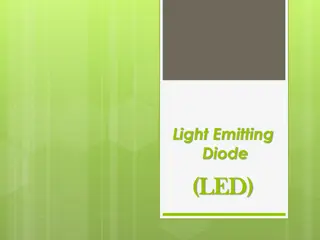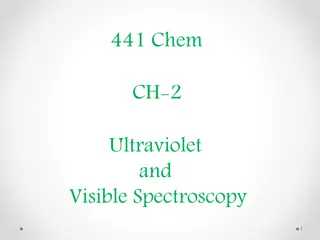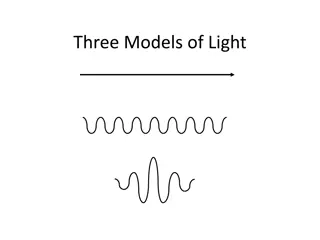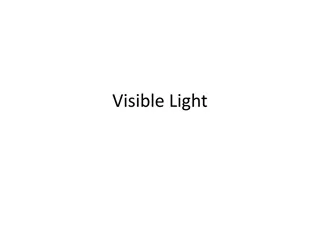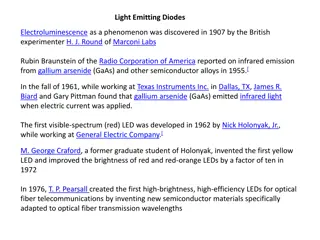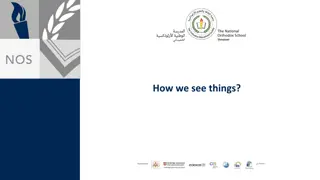Understanding Visible Light and Its Interactions
Explore the properties of visible light, its spectrum, colors, objects it interacts with, and key concepts like reflection, diffusion, refraction. Learn about vocabulary related to light and how it travels through different mediums.
Download Presentation

Please find below an Image/Link to download the presentation.
The content on the website is provided AS IS for your information and personal use only. It may not be sold, licensed, or shared on other websites without obtaining consent from the author. Download presentation by click this link. If you encounter any issues during the download, it is possible that the publisher has removed the file from their server.
E N D
Presentation Transcript
Visible Light MY SO Waves Notes Part 3
Visible Light The part of the electromagnetic spectrum, between infrared and ultraviolet, that is visible to the human eye. Shorter waves - higher frequencies and energy. Longer waves - lower frequencies and energy.
Visible Light Spectrum Produced when light passes through a prism, slowing the wavelength into each separate color. ROY G. BIV - red, orange, yellow, green, blue, indigo, violet
Colors We see these waves as the colors of the rainbow. Each color has a different wavelength and frequency. Red has teh longest wavelength and the shortest frequency. Violet has the shortest wavelength and the highest frequency. Seen together, they make white light.
Visible Objects For an object to be visible it must produce its own light or reflect light. Produces own light - Sun candle, flashlight Reflects light - Moon, mirror, glass
Vocabulary Opaque - A material that reflects or absorbs all of the light that strikes it Examples: wood, metal, cardboard Transparent - transmits light Examples: Glass, water, air Translucent - scatters light as the light passes through Examples: Wax paper, frosted glass
Visible Light Light travels in straight lines. This straight line motion can be: Reflected Diffused Refracted Absorbed
Reflection Occurs when parallel rays of light hit a smooth surface. All the rays are reflected at the same angle. Law of reflection: The angle of reflection, equals the angle of incidence. Angle of incidence: measure of the angle of a ray to the the surface normal (90 degrees to the surface)
Diffusion When parallel rays of light hit a bumpy surface. Each ray obeys the law of reflection, but each ray hits the surface at a different angle. The light is scattered.
Refraction When light waves enter a new medium at an angle, their speed changes. The change in speed causes them to bend, or change direction. Index of Refraction - a measure of how much a ray of light bends when it enters that material.
Visible Light When light traveling in straight, parellel lines pases through an object that is curved like a lens, the light is refracted at different angles Convex, or converging, lenses bend light toward a central focal point. Concave, or diverging, lenses bend light outward away from a focal point..
Absorption Light does not pass through or reflect from material, but remains in the material as energy.
Color of objects Objects reflect colored light that is not absorbed. We see an object s color as the reflected color.
Colors of Light - Primary Red, Blue, and Green When combined in equal amounts, primary colors produce white light. If combined in varying amounts, they can produce any other color.
Colors of Light - Secondary Yellow, Cyan, and Magenta Primary colors combined in varying amounts Complementary - form when a primary color and a secondary color combine to make white. Yellow and blue = white
Brightness A relative expression of the intensity of the energy output of a visible light source. Brightness is determined by the light wave s amplitude. The greater the amplitude, the brighter the light. Distance from light source also affects brightness.
